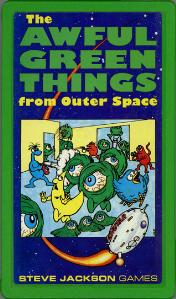 Pocket Box cover | |
| Publishers | TSR, Inc. |
|---|---|
| Players | 2 |
| Chance | High (dice rolling) |
| Skills | Strategy |
The Awful Green Things from Outer Space (AGTFOS) is a two-player space combat board game developed and illustrated by Tom Wham.
 Pocket Box cover | |
| Publishers | TSR, Inc. |
|---|---|
| Players | 2 |
| Chance | High (dice rolling) |
| Skills | Strategy |
The Awful Green Things from Outer Space (AGTFOS) is a two-player space combat board game developed and illustrated by Tom Wham.
The Awful Green Things from Outer Space was first published as an insert in the July 1979 edition of Dragon magazine (Issue #28). [1] This proved so popular that TSR published a boxed set the following year. [2]
After the TSR version went out of print, the rights to the game were subsequently acquired by Steve Jackson Games, which produced a new boxed set in 1989. [2] The game has undergone a number of revisions over the years, and both full-sized and smaller Pocket Box editions exist.
The spaceship Znutar has become infested with rapidly multiplying space monsters after the crew brings aboard a green rock. [1] One player assumes the role of The Awful Green Things (GT's), the other player controls the ship's crew. The GTs' aim is simple: devour the crew and grow. The crew must destroy the GT's, using hand-to-hand combat and improvised "weapons" made from ordinary objects that will have an unknown effect in combat. If the crew player decides that the cause is hopeless, the crew can activate the ship's self-destruct mechanism and abandon ship. The crew must act quickly, or become overwhelmed by the rapidly breeding menace. [2]
The overall action is inspired by the 1968 science fiction film The Green Slime .
The boxed set contains a 16-page rulebook, 151 counters, five green six-sided dice and a 11.5" x 21" game board. [2]
Initially, 22 crew members face off against 11 or 12 GT's that range in size from immobile eggs to full adults. The GT's can grow to a maximum complement of 12 adults, 18 babies, 19 eggs and 22 fragments (pieces capable of regenerating). The crew can use weapons but cannot replace losses. The crew is almost always at a considerable disadvantage, owing both to the frequency with which The Awful Green Things grow to replace their losses, and to their own relative frailty.
Each crew member and GT has three statistics: Attack Dice, Constitution and Movement Allowance. All GT's of the same size / growth phase have the same statistics.
The crew player places the crew members in their respective rooms. Most crew members have several rooms to choose from, but must be placed initially in one of these rooms (rather than in an arbitrary starting location). For example, Captain Yid can start in either of the two bridges. Weapons are also placed by the crew player in the appropriate pre-defined locations.
A roll of a die indexed into a table determines the starting number and type of GT’s. Another roll determines where in the ship the first GT is placed; the rest are placed in contiguous spaces, one to each space. GT's may not start in locations where crew members have been placed.
After setup is completed, the crew player must select one member of the crew to move into a location occupied by a GT. This is designated as the initial discovery of the infestation, which raises the alarm, causing the game to start. The Awful Green Things player takes the first turn.
During his or her turn, the GT player can, in this order:
During the crew player’s turn, he or she can, in this order:
During the game, crew members will grab and use various weapons. While the actual action of a given weapon type is randomized for each game, weapons have certain characteristics which always remain the same. This includes things such as the range of the weapon (i.e., how far away it can be used) and whether it is re-usable. Weapons function according to the following table:
| Name | # of GT's affected | Range | Collateral damage | Re-usable? |
|---|---|---|---|---|
| Bottle of Acid | One | One space | None | No |
| Canister of Zgwortz | One | One space | None | No |
| Comm. Beamer | All in one space | Line of sight | None | Yes |
| Fire Extinguisher | All in one space | One space | None | Yes |
| Gas Grenade | All w/in area enclosed by hatches | One space | 5 dice to Stun | No |
| Hypodermic Needle | One | Same space | None | Yes |
| Knife | One | Same space OR line of sight | None | Yes OR no (if thrown into another space) |
| Pool Stick | One | Same space | None | Yes |
| Rocket Fuel | All w/in area enclosed by hatches | One space | 5 dice to Kill | No |
| Stun Pistol | One | Line of sight | None | Yes |
| Welding Torch | One | Same space | None | Yes |
Once all of the crew members have been killed or escaped, a score value is calculated for both players based on the game resolution. If some crew members escape, victory depends on the number of crew members which escape and make it back to their home planet. Scores are calculated according to the following table:[ citation needed ]
| Side | Crew annihilated | Ship abandoned | Ship abandoned but self-destruct activated | GT's annihilated |
|---|---|---|---|---|
| GT's | 111 | 111 | 55.5 | 0 |
| Crew | 0 | Sum of Constitution values of crew which reach home | Sum of Constitution values of crew which reach home | Sum of Constitution values of surviving crew |
If the crew escapes, the crew player may play through a short epilogue which determines whether or not each escape boat actually made it back home successfully. This is done by reading through a very short series of text passages, while making choices and rolling a die to determine what happens (much like a gamebook).
In the January–February 1980 edition of The Space Gamer (Issue No. 26), Steve Jackson liked the original boxed set published by TSR, saying, "If you like slightly-wacky short games, find a copy of this one. You won't regret it." [3]
In the August–September 1980 edition of White Dwarf magazine (Issue 20), John Olsen gave the TSR boxed set game an average score of 7 out of 10, noting that "Unfortunately, luck plays a large part in the outcome." However, Olsen concluded, "I quite enjoyed playing this wild and crazy game." [4]
In the January 1989 edition of Dragon (Issue 141), Jim Bambra reviewed the boxed set produced by Steve Jackson Games in 1989, and concluded, "If you like fun board games, don’t miss this one, or you’ll never forgive yourself." [5]
Three years later, in the December 1991 edition of Dragon (Issue 176), Doug Niles also reviewed the Steve Jackson Games boxed set, calling it "an exercise in whimsy that nonetheless provokes a tense and well-balanced battle for survival. Throughout, the rules retain a storytelling air that makes for enjoyable reading and wild, unpredictable game effects." Niles did criticize the low production values of the game components, calling the board "light and flimsy", and noting that the counters need to be cut apart with scissors. But acknowledging that it was "a wild and woolly game that moves quickly and promises to be different each time it is played", Niles gave a positive recommendation, saying "Despite its silliness, it is a game that rewards a careful and consistent strategy worked out over a period of turns." [2]
John ONeill of Black Gate called the game "one of the great mini-games of all time", noting that it "stood out for its gonzo humor and original design". [6]
In a retrospective review in the August 1999 issue of InQuest Gamer , Charlene Brusso stated that the game "is so simple you could teach it to your grandma...and she'd like it!" and that it resulted in "lots of wacky fun". [1]
Space Station Zulu , a video game closely resembling The Awful Green Things from Outer Space, was published by Avalon Hill in 1982. [12]

Marvel Super Heroes (MSH) is a licensed role playing game set in the Marvel Universe, first published by TSR in 1984. The game lets players assume the roles of Marvel superheroes such as Spider-Man, Daredevil, Hulk, Captain America, the Fantastic Four, and the X-Men. The game was designed to be easily understood, and this apprach proved popular. TSR published an expanded edition, Marvel Superheroes Advanced Game in 1986.

Steve Jackson Games (SJGames) is a game company, founded in 1980 by Steve Jackson, that creates and publishes role-playing, board, and card games, and the gaming magazine Pyramid.
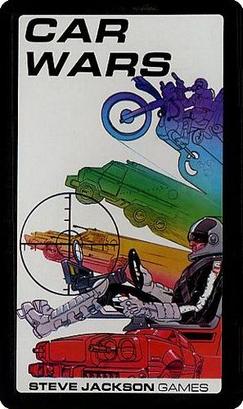
Car Wars is a vehicle combat simulation game developed by Steve Jackson Games. It was first published in 1980. Players control armed vehicles in a post-apocalyptic future.
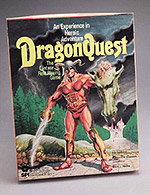
DragonQuest is a fantasy role-playing game originally published by Simulations Publications (SPI) in 1980. Where first generation fantasy role-playing games such as Dungeons & Dragons (D&D) restricted players to particular character classes, DragonQuest was one of the first games to utilize a system that emphasized skills, allowing more individual customization and a wider range of options.

Top Secret is an espionage-themed tabletop role-playing game written by Merle M. Rasmussen and first published in 1980 by TSR, Inc.
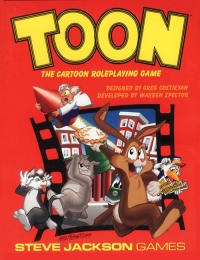
Toon is a comedy tabletop role-playing game in which the players take the roles of cartoon characters. It is subtitled The Cartoon Roleplaying Game. Toon was designed by Greg Costikyan and developed by Warren Spector, and first published in 1984 by Steve Jackson Games.
Tom Wham is a designer of board games who has also produced artwork, including that for his own games.

Palace of the Silver Princess is an adventure module for the Dungeons & DragonsBasic Set. It was recalled on the same day it was released, then rewritten and re-released some months later. The original version, with an orange cover, was written in 1980 by Jean Wells. When the orange version was recalled, the module was rewritten by Tom Moldvay and released with a green cover. Writing credit on the second version was given to both Moldvay and Wells, although there was very little of Wells' original content in Moldvay's version.

Scourge of the Slave Lords (A1–4) is an adventure module for the Dungeons & Dragons fantasy role-playing game, published by TSR, Inc. in 1986. It combines the contents of four earlier modules, all set in the World of Greyhawk campaign setting and intended for use with Advanced Dungeons & Dragons first edition rules.
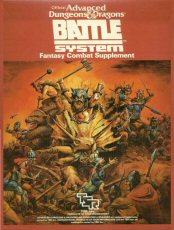
Battlesystem is a tabletop miniature wargame designed as a supplement for use with the Dungeons & Dragons role-playing game. The original Battlesystem was printed as a boxed set in 1985 for use with the first edition AD&D rules. For the second edition of AD&D, a new version of Battesystem was printed as a softcover book in 1989.
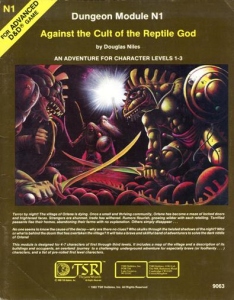
Against the Cult of the Reptile God is an adventure module for the first edition of the Advanced Dungeons & Dragons fantasy roleplaying game, set in the game's World of Greyhawk campaign setting. It is designed for novice players and gamemasters. The suggested party size is 4-7 characters of level 1-3.
David "Diesel" S. LaForce is an American artist who worked on Dungeons & Dragons adventures published by TSR. His artwork and cartography appeared in many TSR products produced from 1979 to 1984 including the classics Q1 Queen of the Demonweb Pits, A1 Slave Pits of the Undercity, and B2 Keep on the Borderlands. LaForce became known for his meticulous and creative approach to adventure maps, and eventually became TSR's staff cartographer. He continued to produce maps for many TSR publications until he left the company in 1997 following its takeover by Wizards of the Coast.
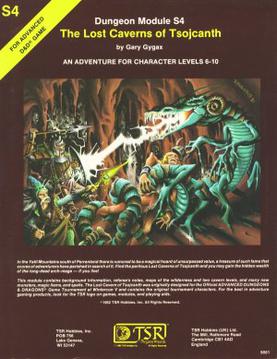
The Lost Caverns of Tsojcanth is an adventure module for the Dungeons & Dragons fantasy role-playing game. It was written by Gary Gygax and published by TSR in 1982 for the first edition Advanced Dungeons & Dragons (AD&D) rules. The 64-page adventure bears the code "S4" and is set in the Greyhawk campaign setting. It is divided into two parts, a 32-page adventure, and a 32-page booklet of monsters and magic items. The plot involves the player characters investigating rumors of lost treasure. After traversing a wilderness and two levels of dungeons, the players face Drelnza, the vampiric daughter of long-deceased archmage Iggwilv.
BattleSpace is a science fiction wargame published by FASA Corporation in 1993. Set in the BattleTech universe, it simulates naval warfare in space.
The DL series is a series of adventures and some supplementary material for the Advanced Dungeons & Dragons role playing game. These modules along with the Dragonlance Chronicles trilogy of novels, which follow one possible adventure series through the modules, were the first published items that established the Dragonlance fictional universe. The original DL series was released from 1984 to 1986, with the final two modules added to it in 1988. In the 1990s these roleplaying adventures from the original series were collected and revised for 2nd Edition AD&D as the three DLC Dragonlance Classics modules. There were also versions of the module series released in 1999, 2000 and 2006.
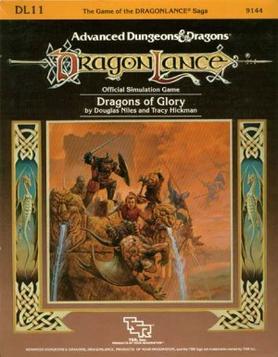
Dragons of Glory is a Dungeons & Dragons source book in a series of modules from the Dragonlance campaign setting. It is one of the 16 DL modules published by TSR between 1984 and 1986.
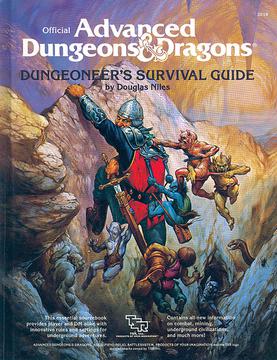
Dungeoneer's Survival Guide is a supplement to the Dungeons & Dragons fantasy role-playing game. The book was written by Douglas Niles, and published by TSR, Inc. in 1986.
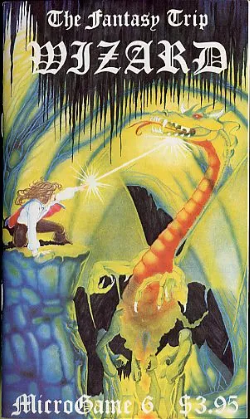
Wizard is a game system of medieval fantasy magical combat published by Metagaming in 1978 that was designed to compliment the previously published Melee, a system of melee combat rules. Forty years later, Wizard was revived and re-released by Steve Jackson Games.

The Expert Set is an expansion boxed set for the Dungeons & Dragons fantasy role-playing game. It was first published in 1981 as an expansion to the Basic Set.

Arms Law is a supplement published by Iron Crown Enterprises in 1980 for the fantasy role-playing game Rolemaster.